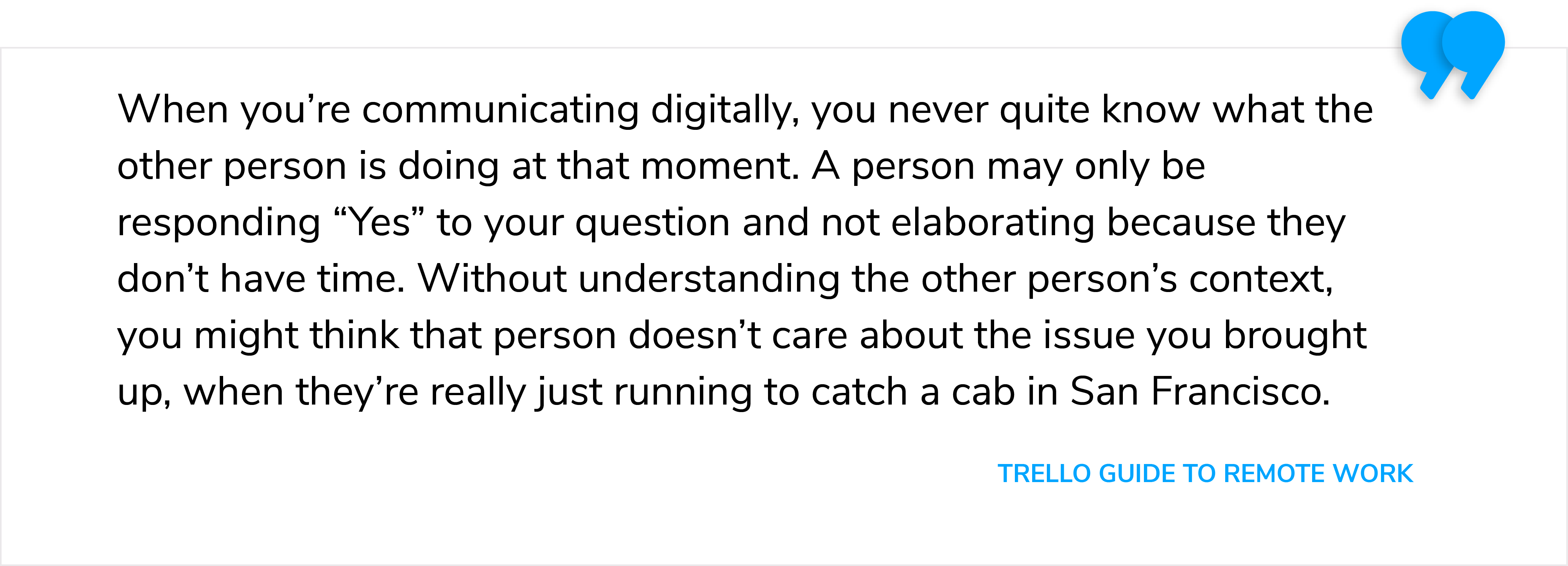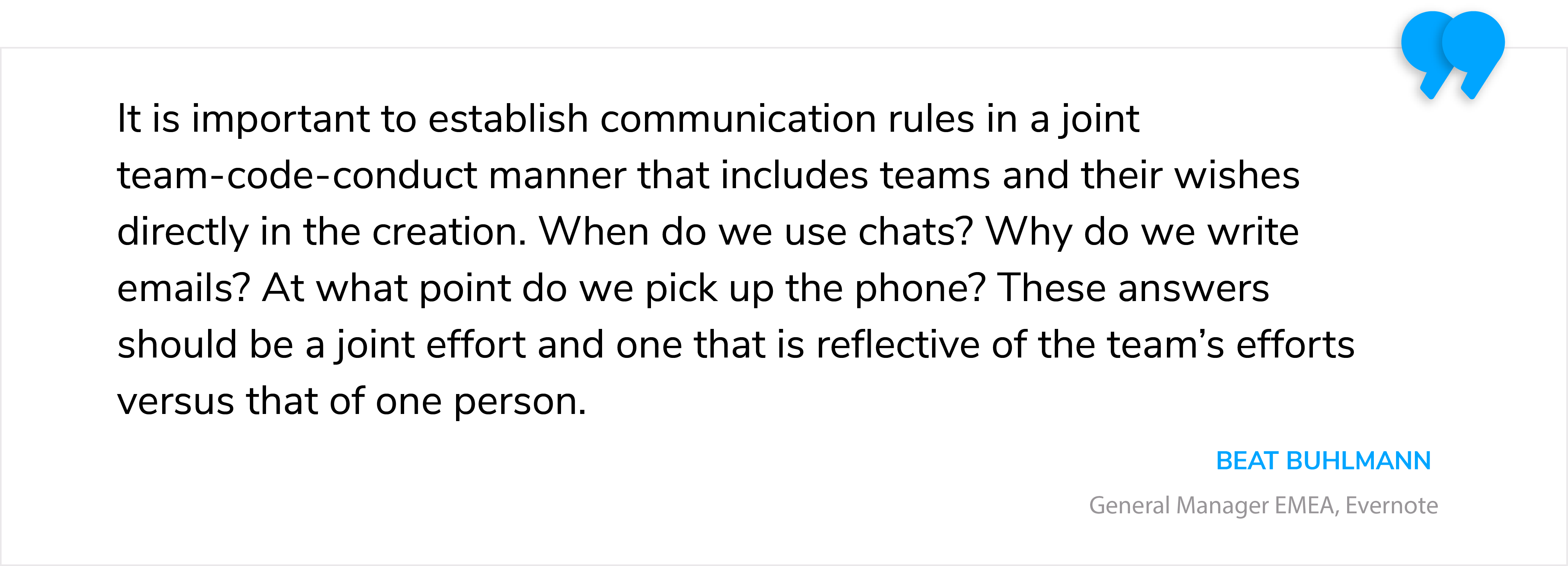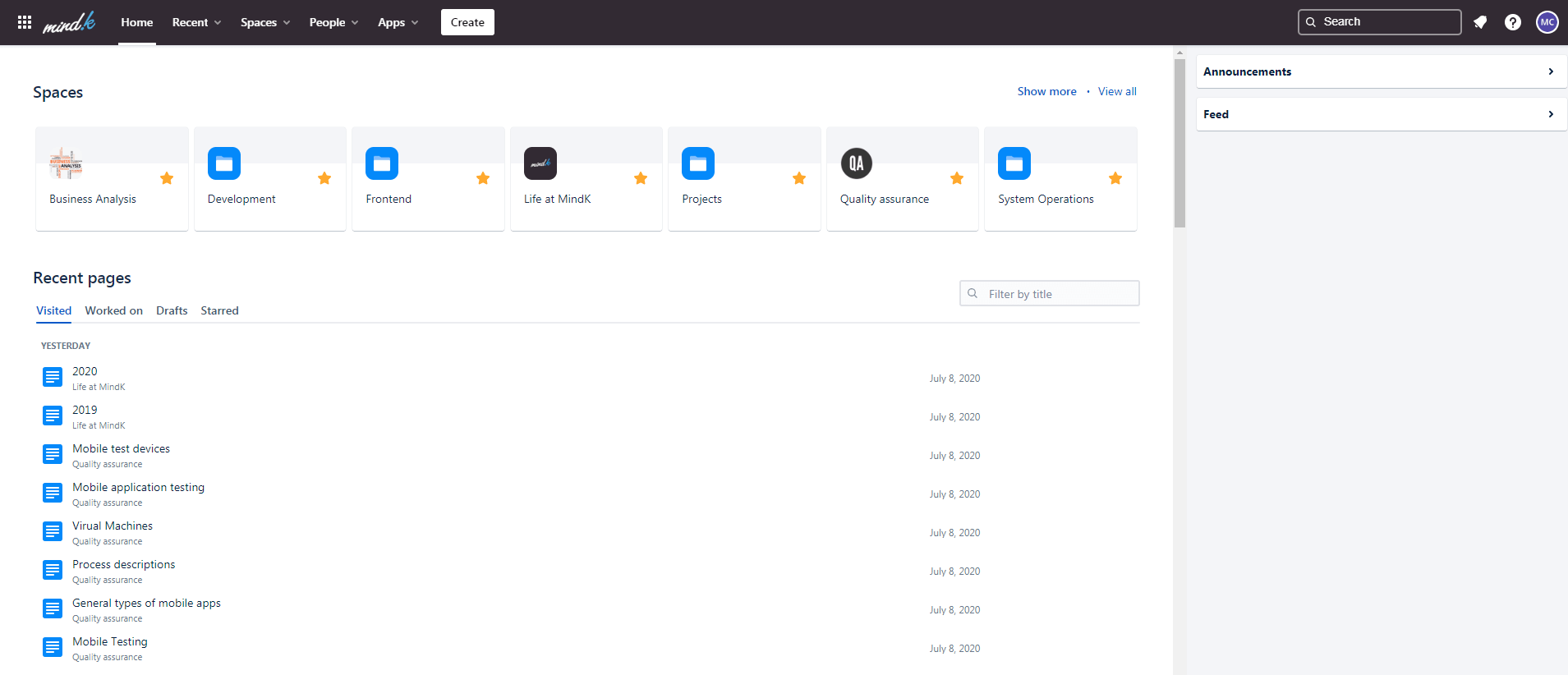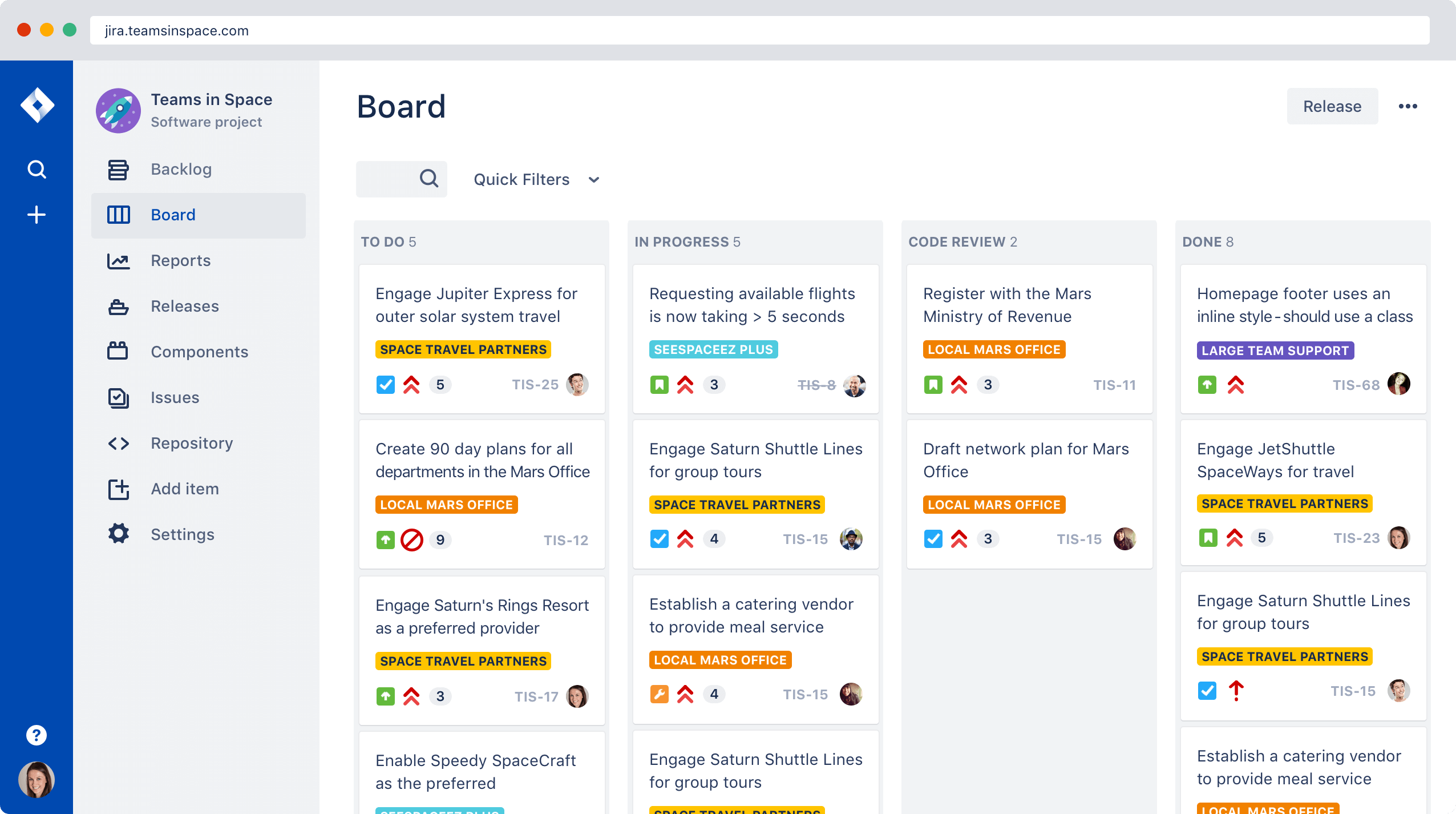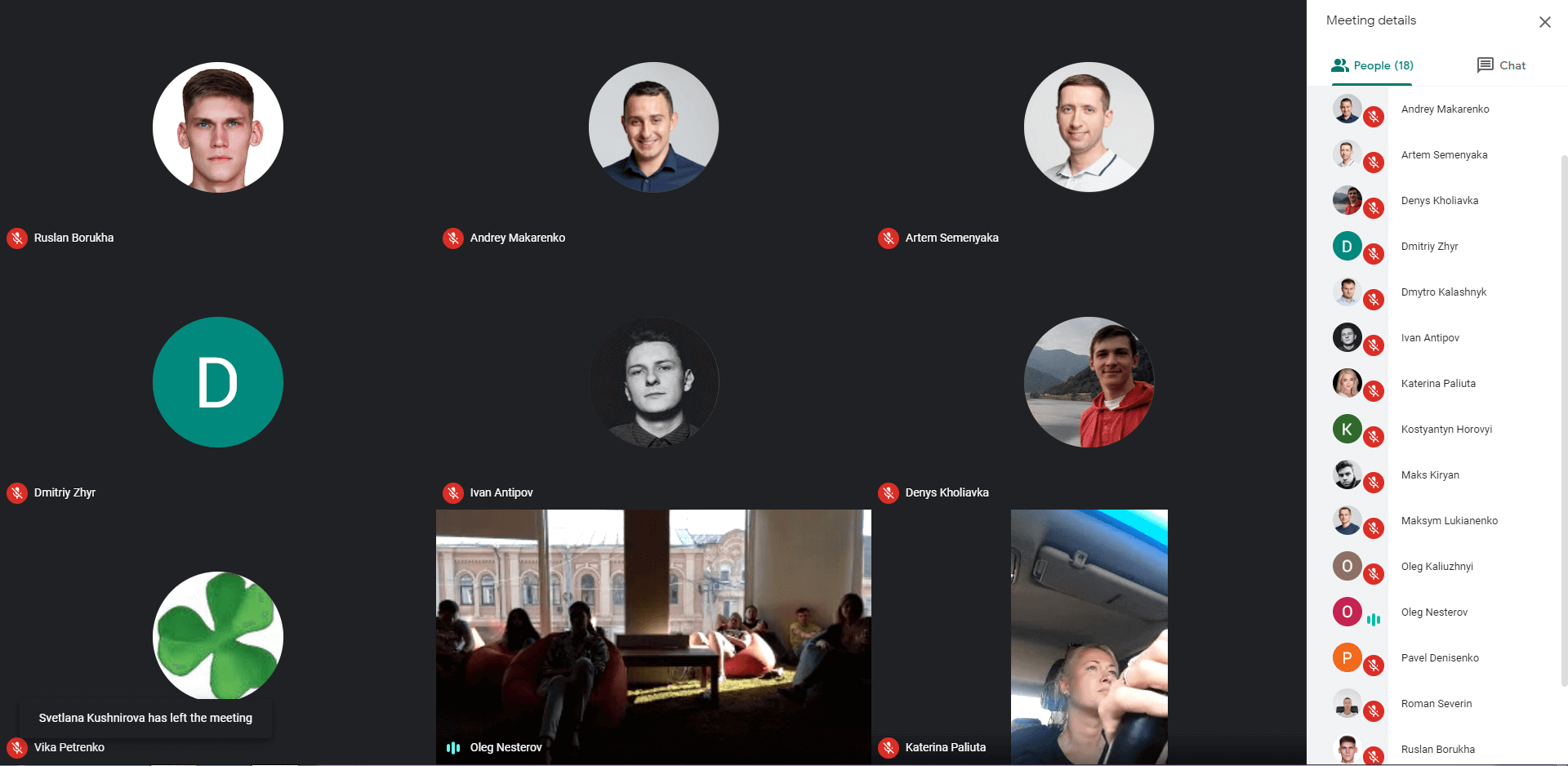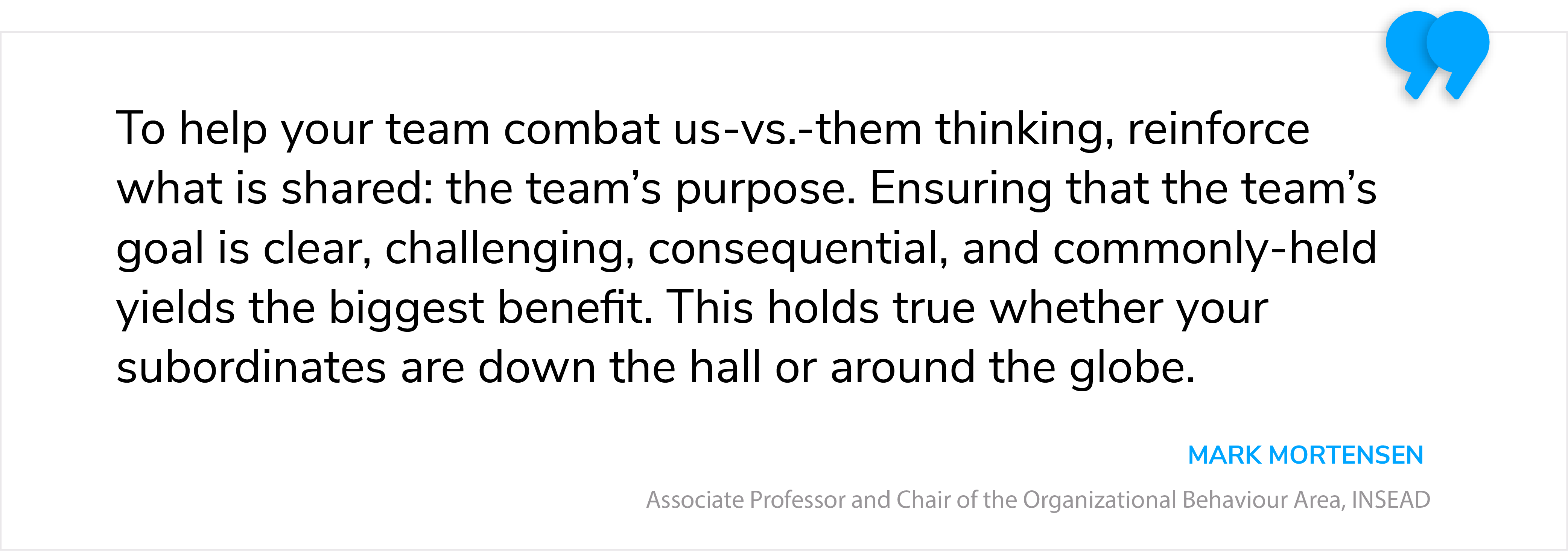In 2023, many companies have shifted away from remote teams after failing the productivity test. So the question is: can you make virtual, geographically distributed teams work for you or is it an inherently flawed model?
We at MindK have experimented with remote work long before the COVID-19 pandemic. Our development teams are spread all over Europe, working with clients all the way from the West Coast.
Based on this experience, we came up with 5 rules, which will help you keep running business continuously, wherever you or your team is – at the office or at home. We’ll list some of the best practices for virtual communication and collaboration as well as get a list of tools for leading virtual teams.
Rule 1: Set communication rules for everybody in a team
Why it matters
Communication with a team is never easy. Distance becomes an additional challenge because it limits face-to-face interactions, complicates teamwork and makes building trust harder.
81% of people consider poor communication and inappropriate information sharing (too much or too little) to have a great influence on the team’s success.
Virtual groups also lack so-called passive information that office workers can exchange during lunch, coffee time, meetings or even from water-cooler talks.
How to Do It
Establish virtual communication rules. Building a set of communication norms improves the productivity of the team and eases tensions.
Here in MindK, we have a number of communication norms such as instant messaging, video conferencing, issue-related chat-rooms, everyday 5-minute meetings with a team to check on the work progress and others.
The tool that makes all this possible – is Slack. We have a great number of channels, open and private, that are dedicated to various projects, topics. Slack has a solid privacy policy that allows us to comfortably talk about work issues. It provides video calls, screen sharing, notifications, integrations with other internal software.
Besides being a great tool for work-related communication, Slack is amazing for friendly conversations and having some fun (that is extremely helpful in terms of quarantine).
Further reading: How to use Slack to organize remote collaboration at your company.
Rule 2: Define the tools for virtual teams that will boost your effectiveness
Why it matters
Technology is the thing that opens the door to virtual teamwork. With members working in different locations, it’s difficult to make sure everyone is on the same page, and control work progress.
The good news is that virtual team communication tools can become your lifesaver.
The bad news is that there are too many tools out there to test them in a short period of time!
How to do it
Be ready that you have to determine your perfect toolkit on your own, as not every tool works for every team. Consider trial periods or ask someone to do research and comparison, and select the one that suits your needs best.
Here’s a set of collaborative tools we use in MindK.
- Slack: we use this tool for collaboration, communicating, video calls (for less than 15 people), keeping in touch with coworkers.
- Trello: this tool is used for both internal purposes and communications with clients. Each task gets a “card” where it is possible to add a person, communicate and track the progress.
- Confluence: the best internal tool for rules and best practices gathering and knowledge sharing.
- Jira: our silver bullet for project management, issue, and bug tracking. With this tool, each of the team members can see the list of required tasks, their prioritization, work progress task and so on.
Source:atlassian.com
- UberConference, Google Meet, Zoom: As a rule, we use these tools to interact with our clients. We also use them to speak to all people in the company at the same time, as Slack can’t handle more than 15 people at a call.
- Google Calendar: an essential tool that allows our employees not to get lost in the flow of meetings: it allows us to see when a person has free time slots to “meet” her/him, and stick to the schedule.
Rule 3: Frame a clear structure and working norms
Why it matters
A lack of a well-defined structure can lead team members into confusion. It causes uncertainty about their responsibilities, task sharing, roles in the process, and achievements. Moreover, the problem of many virtual employees is unclear goals and objectives.
Virtual collaboration, as, in fact, any other, cannot be managed without clear vision and goals, setting boundaries and explicit work agreements.
How to Do It
First of all, you have to make the processes crystal clear to everybody in a team. Each team member should be aware of the common goal. They should not only understand their individual tasks but be aware of those of the other members’, understand the structure of the company and the corporate rules.
All the tasks should be prioritized, otherwise, the employees may have no idea which tasks are urgent and which are not.
So, it is crucial to pay heed to:
- establishing clear internal “rules of the game”;
- drawing up the team structure with all the levels of a hierarchy;
- avoiding any vagueness on roles and responsibilities;
- creating goals and measures evident for all the team members;
- exploring the coordination issues and providing guidelines on how to prevent or beat them, after they occurred.
If you worry that it is too much work to do and you need results as soon as possible, believe us, it is well worth the effort. It can be done once (for example, in a written form) and then updated if necessary. This will create a strong foundation for a healthy environment in your virtual workspace.
Here in MindK, we use Confluence for this purpose. It is an open workplace that allows creating, storing and sharing valuable information, internal regulations, guidelines, best practices – all in one place. With Confluence, you have no need to search across email, Google Drive or folders on your local machine for required data.
This tool is advantageous not only for virtual teams but also for office employees. They can access the necessary info whenever they need it. Additionally, we have created an illustrative diagram that reflects the structure of all the departments in the company and shows how all of them are interconnected.
Rule 4. Beat the bag out of meetings
Why it matters
Meetings are considered to be one of the major time-wasters at work. Sometimes, people spend around half of working time in group or solo meetings. Nevertheless, do not consider meetings to be your enemy. It is a great business tool for exchanging information and solving problems.
During remote working, meetings are crucial. But the chances to communicate effectively are lower than for traditional teams. The words may be unclear, misinterpreted or easily forgotten.
How to Do It
You need to determine the internal rules of holding meetings, a so-called meeting culture.
In MindK, it took us a long time to work out the meeting culture that perfectly works for us. Here is what it involves:
- Use video calls. In spite of the fact that most employers tend to use phone, email, and messaging to communicate, 80 percent of all communication is based on visual cues. Video meetings are often more productive, shorter and more engaging.
- Set an agenda, period. Without it, you risk spending 15 to 20 minutes just to puzzle out why you have actually gathered for a virtual meeting. You can also share the agenda with all the participants thus giving them a chance to prepare and digest the information.
- Follow timing. The worst types of meetings are those which have no ending time. Don’t wait for latecomers. It is not fair to make people wait for one person who is late.
- Make Small Talk. It acts as an icebreaker, boosts spirits, makes people feel more connected and willing to contribute.
- Go over important items first. Try to follow the 80/20 rule. Even if you run out of time, you will manage to cover the items that represent 80% of the value of the meeting.
- Summarize and send meeting notes. Only after you have reached the common ground for one item, go on to the next one. After each question is covered and the meeting is over, send each participant meeting notes – short and informative.
Rule 5. Establish trust
Why it matters
Trust underlies the core principle of virtual work. Teams can’t operate well when its members don’t trust each other. Studies show that people instinctively do not trust everyone except their own family members. So, building trust is a challenge for each and every team on the planet.
Trust can also make your company work more effectively. If you think it sounds doubtful, here is what Harvard study found out when comparing the performance at high-trust and low-trust organizations.
The team members in high-trusted companies experience 74% less stress, 106% more energy at work, 50% higher productivity, 13% fewer sick days, 76% more engagement, 29% more satisfaction with their lives, 40% less burnout.
How to do it
You need to understand that trust relies on three basic factors — competence, integrity, and benevolence.
To build trust in competence you can testify the skills and expertise of each member of the team regardless of his role. Give them the opportunity to explain their work and its outcomes, tip-off about the way they handle tasks.
In order to improve trust on integrity, accustom team members to keep promises, follow deadlines, and keep up to regulations and norms the team has agreed to.
And lastly, trust on benevolence completely depends on the willingness to be transparent and help each other.
“The root cause of the absence of trust lies with team members being unable to show their weaknesses; to be vulnerable and open with one another.” – The Five Dysfunctions of a Team, Patrick Lencioni
Wrapping up
We hope our recipe for the success of the virtual project team can help you overcome common challenges with remote working. And as they say, each challenge is a place for new opportunities. So it’s time to seize them.

